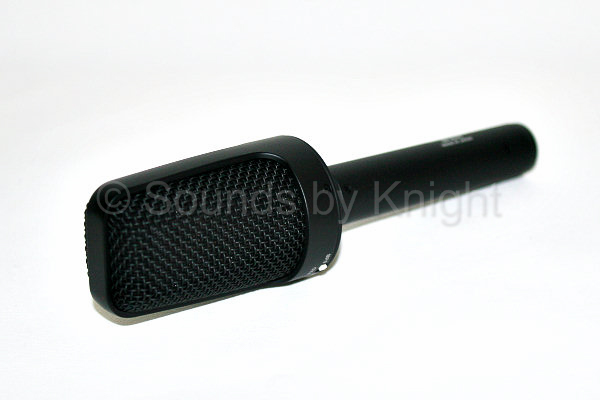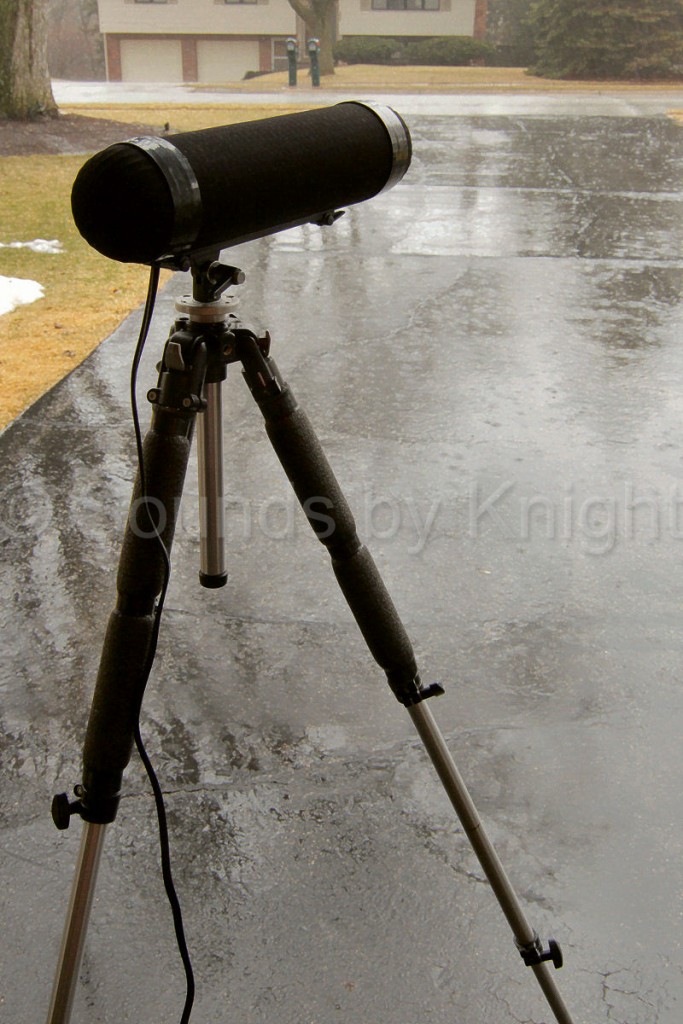In January of 2011 I bought a Zoom H4n to do some voice-over and ambient sound recordings with. Although this little recorder is packed full of features, the preamps really lack the sound quality needed for semi-professional work.
In searching for a new field recorder, there was a few features that I required… clean (relatively speaking) preamps, 96/24 bit PCM wav format, large SDHC card capacity, standard battery operation with the ability to plug in external power if needed, bright, readable screen & portability. This narrowed my search down to only a few companies that offer a solid state, 2 channel portable field recorder in the $600 to $800 range.
I decided to go with the Marantz PMD661 from Oade Brothers Audio for two reasons… back in the mid 80’s when I first started doing field recordings, I owned a Marantz PMD420, a wonderful semi-professional portable cassette field recorder that I used for many years without a problem, so I knew of Marantz’s reputation for quality. Second reason… Marantz PMD661 had most of the features I was looking for within my price range.
After doing some preliminary testing, I thought I’d share some things I like and dislike about this recorder.
*Likes*
Out of the box this recorder is fairly simple to use without many bells and whistles. Start-up from the time you switch it on is a mere 8 seconds. The display is big, bright and easy to read… and it also has a separate LED levels display on the front. The volume control for the headphones is just loud enough to monitor what you’re recording in a semi-quiet environment.
With the updated firmware this recorder will take a 32 gig SDHC card for more hours of recording in 96/24 bit PCM wav format than one could possibly want. The XLR preamps are clean with a relative low noise floor (depending on the mic you use). The XLR connections are tight and lock securely into place. The independent level gains are nice to have if the R & L channels are way off balance. The menu system is very straight forward and easy to navigate… the buttons used for the menu system are rubberized and easy to use.
Recording is a snap with this recorder… touching the rec/pause button puts the PMD661 into a rec standby mode (rec button flashes red) to set the levels then when you’re ready to record you hit the rec button (rec button turns solid red). Hitting the rec/pause button again will pause the recorder leaving it in the rec standby mode or you can stop the recording with the stop button and this will finalize the file to the card.
Sound quality… so far it’s much cleaner than the H4n. I can’t comment on the difference in how the Oade Brother FET Mod preamps sound compared to the stock amps… but I would love to test them side by side.
*Dislikes*
Ok… now the things I don’t really like. This recorder is large (about the size of a VHS tape) with a smooth plastic shell and I find it hard to hang onto without it wanting to slip out of my hands. The power, key lock buttons & SDHC card hatch on the sides are loose and feel cheap. Battery life is marginal. With phantom power on, I only get about 3 hours of life with four AA’s using the Audio Technica BP4025 mic.
Although I do like the simplicity of the menu system the options you have are limited… although you really don’t need much. The display only show parts of information on one screen… you have to toggle through different displays to view levels, time remaining or time recording! This recorder has no limiter but does have a ALC (Auto Level Control) which I find useless! It also has a low and high pass filter but I have no idea what the frequency roll-offs are (couldn’t find this information in the manual or on Marantz website… if anyone has this information, please let me know!).
The XLR preamps are FET Mod by Oade Brothers Audio and are relative quiet until you hit about seven on the gain adjustment (this also has a lot to do with the mic being used). One thing that I noticed is as you move the manual levels gain knob you can here faint clicks at about level 5 and above. I’m not sure if this is normal or something defective, but it makes using this recorder useless if you have to adjust the gains on the fly during a recording!
The Stop, Pause & Record buttons are very sensitive and if you’re not paying close attention you could accidentally start or stop the recording at the wrong time! The fast forward and reverse functions are kind of useless compared to other recorders.
*Mic*
I also purchased a Audio Technica BP4025 X/Y Stereo Microphone for ambient recordings along with a 40cm Indie Blimp windscreen. I’ve only done a few recordings with this mic and I do have to say it’s a very flat sounding mic. This can be a good or a bad thing… If you’re looking for a mic that sounds great out of the box, then this isn’t the mic for you but if you plan on doing some post editing then this is a great mic because it doesn’t color the sound much and gives you a lot of room to tweak in post.
I got my first chance to test this setup on a quick moving thunderstorm last week (02-28-12)… this same system produced tornadoes just to the south of us.
The Audio Technica BP4025 mic was mounted in a blimp on a tripod just outside of my garage with no windjammer. The low pass filter was set to 80Hz roll-off… I set the Marantz to 96/24 bit PCM wav format with a record level just over 5.
The first audio clip is the raw file out of the Marantz
converted to MP3 at 192 Kbps…
I cleaned the second audio clip up a little in post to brighten
the highs and toned down the mids…
Unfortunately, there really isn’t many choices in this price range for a decent recorder. For $300 you can buy a Zoom H4n with a lot more features but the xlr preamps are very noisy. Olympus just released a new recorder the LS-100 for $399, I’m sure to compete with the now aging Zoom, & Tascam recorders. If this unit has cleaner xlr preamps than the Zoom, then I’m sure it will be a big hit with the Indie and field recording guys.
* Conclusion *
This recorder is very straight forward to use… no manual needed on this unit! The preamps are much cleaner than the H4n but the clicking noise heard while adjusting the levels gain knob is disturbing (still investigating the cause of this). I don’t like the smooth, plastic body on this recorder and I’m sure the first time it slips out of my hands it will be going back for repairs.
So how does it sound? Well… this is a tough one to answer. With the right mics this recorder does an excellent job. It’s a definite step up from the H4n as far as sound quality goes but a major step down if you’re looking for a bunch of cool features like adjustable low pass frequency filters.
If you’re looking for a simple, portable field recorder with relative clean XLR preamps (internal mic suck big time on this unit), then this might be the ticket for you. If you’re looking for a robust, professional unit built to take a lot of punishment… then you’ll need to get your wallet out and start looking at the Sound Device recorders!
So is the Marantz PMD661 worth the $700 price tag? It’s a tough call… I feel that this recorder is outdated compared to many of the recorders on the market today. Although you can record in 96/24 bit, which is more than enough bit depth for any project, the build quality and basic features really hinder this unit from being a truly professional portable field recorder.
*UPDATE 12-2013* Since this review I have sold the PMD 661 and purchased a Sound Devices SD702… What a fantastic recorder!
As always, please leave a comment, I’d love to hear what your thoughts are!
Thanks for reading,
Brian Knight
Sounds by Knight




